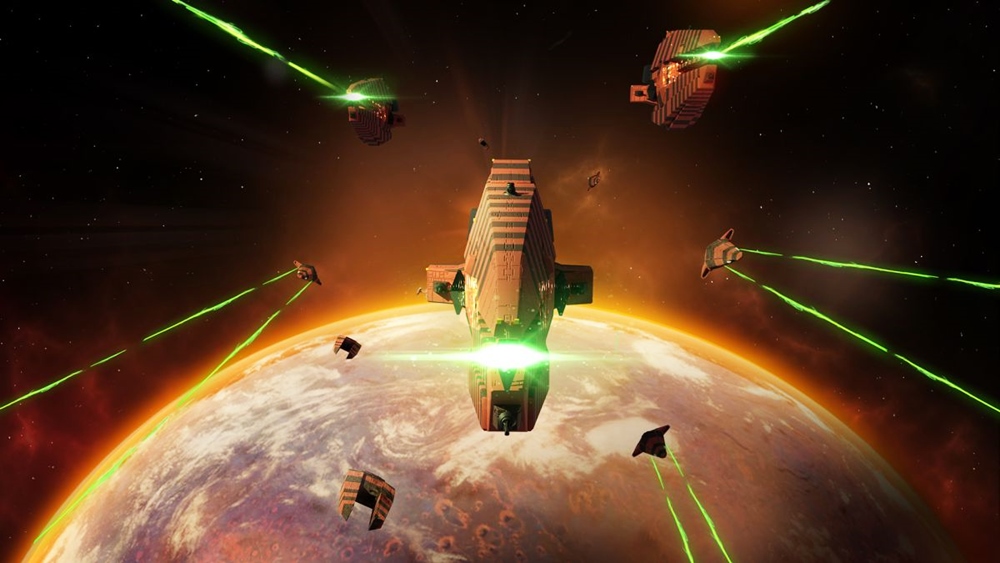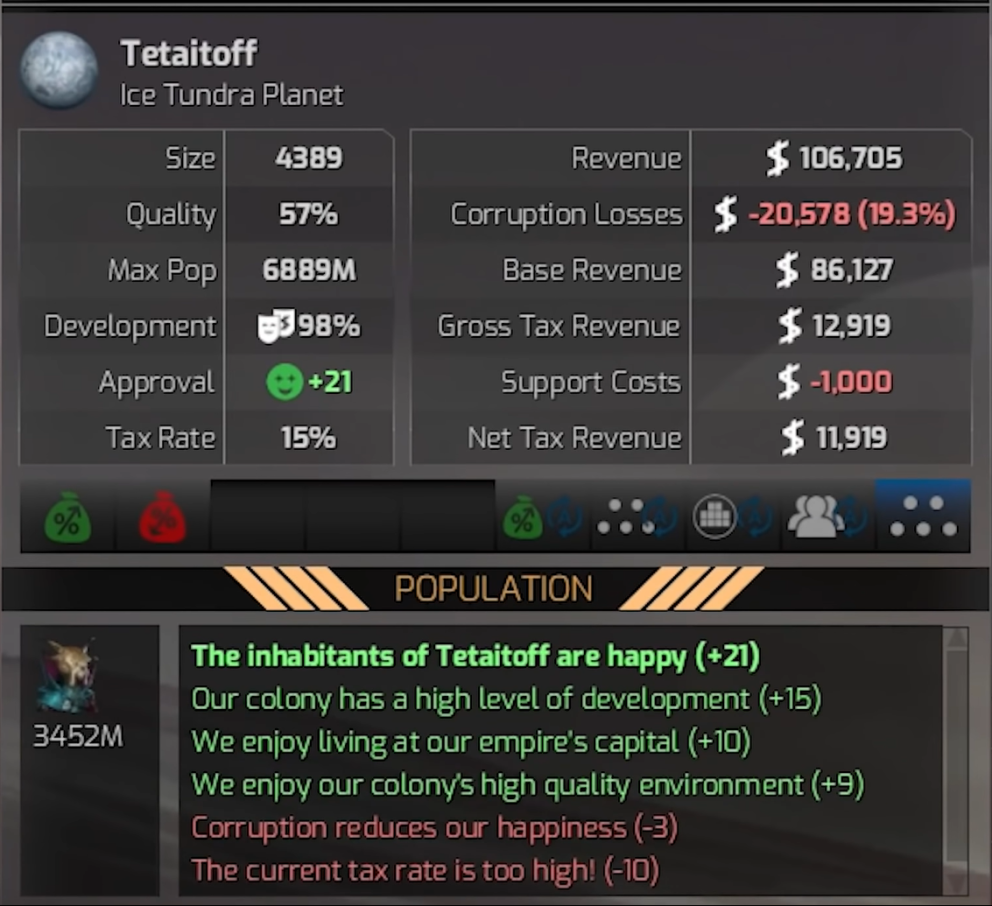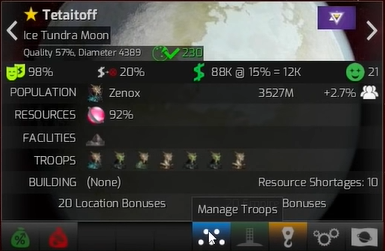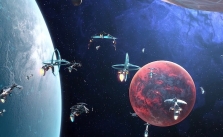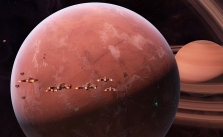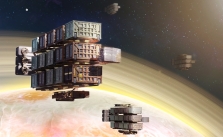How to Win in Distant Worlds 2 – Advanced Tips and Tricks
Distant Worlds 2 is a lot to take in, even for hardcore 4X gamers. There is the state and private economy, factions, planets, mining on said planets, colonization, building an empire, and much more. Controlling an intergalactic civilization is not easy, and Distant Worlds 2 offers quite a realistic and accurate simulation-based gameplay. Here are a few tips to get you jumpstarted on your journey.
Distant Worlds 2 Win Conditions
- You win the game by achieving one of the following Victory Conditions:
Territorial Victory – Controlling a certain area of the entire galactic territory.
Population Victory – Taking control of a percentage of the total population.
Economical Victory – Generating the majority percentage of the entire economy.
Time Limit Years – Reaching the game’s time limit.
- All the Victory conditions are combined into a single progress bar, and the first player to reach the threshold (40-100%) wins the game.
- DW2 also has race-specific victory conditions that reflect each of the races’ unique backgrounds, and you can select which Victory conditions you want to keep in the game (Territory, Population, Economy, Race). Learn about all the victory conditions in our races guide.
- Press V to bring up the Victory Conditions screen, where you can compare your empire’s progress to others’. The rest of the controls are covered in our Distant Worlds 2 PC Keyboard Controls guide.
Advanced Gameplay tips for a better experience
Choosing a race
- Each race is unique as they have Race Specific:
Events
Research
Bonuses
Victory Conditions
Ship Design
- There are two types of factions in Distant Worlds 2:
| Playable Factions | Ackdarina, Boskara, Haakonish, Humans, Mortalen, Tekken, Zenox. |
| Independent Factions (AI) | Atuuk, Dhayut, Gizurean, Ikkuro, Ketarov, Kiaidian, Naxxilian, Quameno, Securan, Shandar, Sluken, Ugnari, Wekkarus. |
Read our Distant Worlds 2 Playable Factions guide to learn more about them.
Resource Gathering and Management
- Gathering resources is essential to winning the game, and knowing how to prioritize those resources will keep you one step ahead of the competition.
- Because the mining industry is managed by the Private Economy, you do not have direct control over what you mine. You can, however, nudge them in the right direction and persuade them to mine the resources you want.
- Your Exploration ships scouts out potential planets, moons, and asteroids across the various system for mineable resources.
- Following the discovery of resources by the exploration ships, the Private Industry assesses the supply and demand for those materials before acquiring them.
- The Private Industry can either redirect existing mining ships to mine the newly discovered supplies or build new ships to fetch them.
- Mining ships have to travel from your home system to the destined location (planet, moon, asteroid belt) to gather supplies, so travel time is involved.
- There are three types of resources in the game: Fuel, Construction, and Luxury.
Fuel (1) – Powers hyperdrives and reactors, and a ship’s speed are lowered by one-third when they run out of fuel.
Construction (16) – Building stations, ships, facilities, and colony growth is slowed without construction resources.
Luxury (62) – Offers bonuses such as bonus colony development, plague curing, happiness, bonus research, income, and population growth.
Learn more about resource gathering and management in our Distant Worlds 2 Resource guide.
State and the Private Economy
- In Distant Worlds 2, there are two types of economies: State (under your direct control) and Private (not under your direct control).
- As the State, you derive income from taxes, diplomatic tributes, and other bonuses (resource trading, tourism, shipbuilding, fuel sales, trade bonuses).
- The total currency generated in each colony is its Revenue.
- Colony Support costs are higher for newly discovered colonies, hostile colonies, and unsuitable Make sure you have enough funds to cover those expenses for the first few years.
- Support costs are higher for new colonies, those built on less hospitable planets to the designated species, and even overpopulated.
- Maintain reasonable tax rates to avoid rebellion, corruption, or even mass migration if a better colony shows up in your system.
- The Private economy primarily deals with the movement of goods through your empire at the beginning of the game, and until you research Tourism and Passenger Transport.
- Private industry can only commission new ships or structures on your state-run facilities, and any additional investment goes straight to your treasury as bonus income. In our Distant Worlds 2 Economy guide, you can learn more about the state and private economies.
Expanding Optimally
- The pre-warp technology speed does not offer faster than light speeds for your ships. Consider travel time when you are expanding your empire because interstellar travel takes a long time.
- Unlock hyperspace tech as soon as possible.
- Use the exploration tab to monitor idle ships and set exploration tasks accordingly.
- Always choose ‘Explore System’ over ‘Move to.’
- It is pointless to establish a colony unless you can reliably travel between them to exchange/transport resources.
- It’s difficult to defend far-flung colonies from enemy empire attacks, space creatures, and pirates. Create colonies within your defenses’ range so that the fleets can respond quickly to invasions.
- More passenger ships should be built to transport citizens to newer colonies. To encourage migration, maintain a high level of happiness and low tax rates.
Maintain peace and avoid invasions in colonies
- Always hire troops to suppress rebellions and protect your citizens against pirates and other threats.
- All troops have recruitment and maintenance costs.
- Always garrison your troops to avoid them from getting accidentally picked up by your transport ships during an invasion.
Read our Distant Worlds 2 Defense guide to learn more about combat tactics and must-have ships during the early game.
Understanding Characters
- Characters randomly join your colony as you keep playing the game.
- There are a total of five characters:
Ambassadors
Scientists
Fleet Admirals
Troop Generals
Spies
- Embarking on major military expansion increases the chances of generating an Admiral. Convincing alien factions to sign new treaties can generate an Ambassador. Lastly, a critical research breakthrough may generate a Scientist.
- Understanding your characters’ skills and traits helps to place them in appropriate tasks that are best suited to their abilities.
- Characters also develop specific traits such as Poor Administrator (-5% Colony Income) or Labor Oriented (-5% Population growth, -5% Colony happiness, +5% Colony Income, +5% Ship construction speed, +5% Facility construction speed.
Your characters will gain more traits as they keep working in their designated roles.
Parting thoughts
Mastering the game will not be easy, but it will be extremely rewarding once you understand the inner workings of this perfectly complicated universe. Hopefully, you have found this guide helpful. Stay tuned for more guides, and address all your questions in the comments below.

